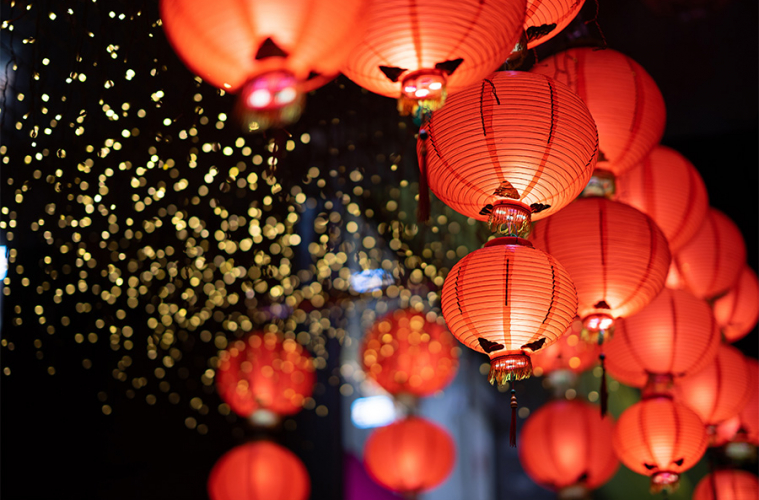Did you know that revenue from retail sales during the Chinese New Year festival reached £92 billion last year — and that previous years were even higher? The Chinese New Year celebrations offer e-commerce businesses a rewarding opportunity to increase their profits if they’re able to prepare for the festival in time.
If you’d like to try your hand at selling in China for the Spring Festival holiday, you’re in the right place. We’ll give you a rundown of everything you need to know about Chinese New Year so you can avoid common missteps.
Know the deadline
The traditional Chinese calendar uses the lunar system to determine celebration days, so the specific date can vary from year to year. In contrast, the wider international community uses the solar Gregorian calendar system wherein celebration dates are fixed. Each year, dates for Chinese cultural celebrations are published by the Chinese government around November.
The 2022 date for the Chinese New Year is scheduled for 1st February and will be the year of the tiger under the zodiac system. This means you’ll need to have all your products ready to ship and available for order in the weeks and months before this date as consumers purchase ahead of visiting loved ones.
Similarly, if you find that your sales from 2022’s Chinese New Year have gone well and you’d like to repeat the feat in 2023 or beyond, you’ll need to pay attention to the shifting dates as it will heavily impact your logistics for future sales.
Prepare your products
If it’s your first time selling into China, meeting the specific cultural tastes of Chinese nationals may seem hard — what are popular brands that people would like to buy? Are there product categories I should invest in more or avoid entirely? Are there regional variations?
If you’d like some inspiration on gift ideas to stock, research what is popular with consumers this year so you’re ahead of the curve for 2023. You’ll find that there’s lots of overlap between Western and Chinese tastes for gifts: alcohol and tobacco for adults, toys and sweets for children, luxury goods for loved ones, etc. Instead, what changes are the specific brands and preferred features of products (like flavour or colour). Take time to do your market research and stock goods you’re confident will sell well.
If you’re in need of a manufacturer, consider working with alibaba.com. They’re one of China’s leading B2B providers and specialise in manufacturing and e-commerce supply. Not only are Alibaba manufacturers highly qualified and versatile (allowing you access to a broad range of potential goods), they’re also based locally in China – shortening your dispatch time to consumers and helping you secure the sales edge you may need. Find out how to source, pay and manage products on alibaba.com in more depth with our helpful guide.
Place orders and prepare your strategy early
Even if you’ve developed a product by tweaking an existing white-label good, you’ll know it can take time to perfect. In addition, customer expectations are high given the importance of the celebration, and you don’t want to lose profits to returns and refunds.
Make sure to finalise your orders and operational strategy early. Although the Chinese New Year doesn’t arrive until February, the time in between the festival is bookended by important Western holidays like Thanksgiving, Christmas and Valentine’s Day. Therefore, Chinese manufacturers may have existing orders placed and could struggle to fit in your production run in time for the Spring Festival – so be sure to take your learnings from 2022 so you can start preparing in advance. It’s also important to think about your platform; depending on your customer research, you may find that one platform is more suited to your product category, however, it may be safer to use a larger platform for more consumer access and product visibility.
Make sure to utilise sales across the entire week
The Chinese New Year or Spring Festival is one of two ‘Golden Weeks’ in China – these are holidays that are more culturally important and therefore last longer than the typical three-day period allocated for other traditional celebrations.
As you’re preparing your business, try to come up with a strategy that covers the entire week: target a niche consumer demographic or offer a wider range of goods with impulse buys and last-minute goods on offer.
Trade in renminbi like a local
Taking advantage of China’s booming e-commerce market can bring some challenges surrounding, among others, currency exchanges. Businesses that don’t facilitate payments in China’s renminbi may face losing business as customers struggle to understand the value of goods if prices are in currencies they’re unfamiliar with. Even if they do understand the exchange rate and value on offer, transaction fees remain an additional barrier to overcome. If you’re looking for an easy way to accept international currencies and move money around, use WorldFirst.
WorldFirst is a leading international payments provider with nearly 20 years of experience and specialises in facilitating payments in and out of China — so whether you need to send money to suppliers or receive it from customers, WorldFirst has the solution.


